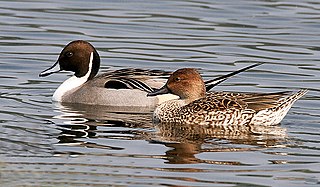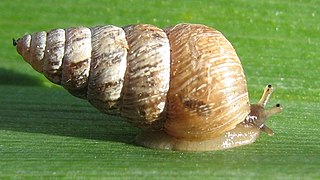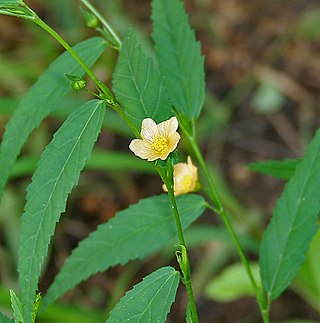
The pintail or northern pintail is a duck species with wide geographic distribution that breeds in the northern areas of Europe and across the Palearctic and North America. It is migratory and winters south of its breeding range to the equator. Unusually for a bird with such a large range, it has no geographical subspecies if the possibly conspecific duck Eaton's pintail is considered to be a separate species.

Pityriasis lichenoides et varioliformis acuta is a disease of the immune system. It is the more severe version of pityriasis lichenoides chronica. The disease is characterized by rashes and small lesions on the skin. The disease is more common in males and usually occurs in young adulthood, although it has been seen in every age group and every race. It is possible for the disease to go into remission for short periods of time or forever.

Siphanta acuta is a species of planthopper in the family Flatidae; this species is native to Australia, but is now found in various other parts of the world. About 10 mm long, they resemble small leaves and are generally found in trees.

Physella acuta is a species of small, left-handed or sinistral, air-breathing freshwater snail, an aquatic gastropod mollusk in the family Physidae. Common names include European physa, tadpole snail, bladder snail, and acute bladder snail. In addition, Physa acuta, Physa heterostropha and Physa integra are synonyms of Physella acuta.

Pleurocera is a genus of freshwater snails with an operculum, aquatic gastropod molluscs in the family Pleuroceridae.

Agalinis acuta is an annual hemiparasitic plant native to Maryland, Massachusetts, Rhode Island, Connecticut, and Long Island, New York. Common names include sandplain gerardia and sandplain false foxglove. It is one of about 70 species that comprise genus Agalinis. It currently resides within the family Orobanchaceae, but historically was aligned with members of the Scrophulariaceae. This was one of several re-alignments that were the consequence of the disintegration of the Scrophulariaceae as the result of conclusions based on molecular phylogeny data from the chloroplast genome. While historically regarded as a separate species, molecular phylogenetic data indicates that Agalinis acuta should be consolidated as part of the species Agalinis decemloba.

Antonio Braga was an Italian classical composer. Born in Naples, he wrote ballets, concerto, ouvertures, symphonies and three operas.
1492 epopea lirica d'America is an opera in four acts by Antonio Braga. Composed from 1985 to 1989, it stage premiered on 13 October 1992 at the Teatro Nacional in Santo Domingo to mark the Columbus Quincentenary.

Carex acuta, the acute sedge, slender tufted-sedge, or slim sedge, can be found growing on the margins of rivers and lakes in the Palaearctic terrestrial ecoregions in beds of wet, alkaline or slightly acid depressions with mineral soil.

Cochlicella acuta, common name the pointed snail, is a species of small but very high-spired, air-breathing land snail, a pulmonate gastropod mollusk in the family Geomitridae.

Cochlicella is a genus of small, narrow-shelled, air-breathing land snails, terrestrial pulmonate gastropod mollusks in the family Geomitridae, previously placed in the Helicidae, Cochlicellidae or Hygromiidae.

Chrysodeixis acuta, the tunbridge wells gem, is a moth of the family Noctuidae. It is found in Africa as well as the on Canary Islands eastwards to Australasia Indonesia and Oceania.
Hydrobia acuta neglecta is a European subspecies of small brackish water snail with a gill and an operculum, an aquatic gastropod mollusk in the family Hydrobiidae.

Tertrema is an extinct genus of trematosaurian temnospondyl within the family Trematosauridae. It is known from skull material from the Vikinghøgda Formation on Spitsbergen Island in Svalbard. Relative to most trematosaurids, Tertrema has a proportionally short snout and widely spaced occipital condyles. While typically placed in the subfamily Trematosaurinae, a 2021 phylogenetic analysis suggested that it was actually nested among the long-snouted lonchorhynchine trematosaurids.

Sida acuta, the common wireweed, is a species of flowering plant in the mallow family, Malvaceae. It is believed to have originated in Central America, but today has a pantropical distribution and is considered a weed in some areas.

Quercus acuta, the Japanese evergreen oak, is an oak native to Japan, South Korea, Taiwan, and China's Guizhou Province and Guangdong Province. It is placed in subgenus Cerris, section Cyclobalanopsis.
Epopea is a genus of longhorn beetles of the subfamily Lamiinae, containing the following species:
Epopea lignosa is a species of beetle in the family Cerambycidae. It was described by Stephan von Breuning in 1940.
Epopea orientalis is a species of beetle in the family Cerambycidae. It was described by Stephan von Breuning in 1940.
Epopea subacuta is a species of beetle in the family Cerambycidae. It was described by Stephan von Breuning in 1952.














